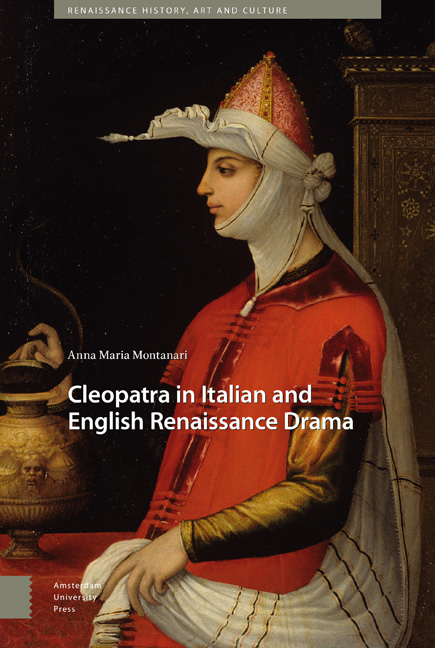Book contents
- Frontmatter
- Dedication
- Epigraph
- Contents
- List of Illustrations
- A Note on the Cover
- List of Abbreviations
- Acknowledgements
- Introduction
- 1 ‘No Humble Woman She’
- 2 ‘The Subject of Talk the World Over’
- 3 The Egyptian Queen's Rebirth
- 4 The Great Theatre of Cleopatra
- 5 ‘The Wanton Luxurie of Court’
- 6 ‘A Lass Unparalleled’
- Conclusion
- Bibliography
- Index
3 - The Egyptian Queen's Rebirth
Published online by Cambridge University Press: 21 November 2020
- Frontmatter
- Dedication
- Epigraph
- Contents
- List of Illustrations
- A Note on the Cover
- List of Abbreviations
- Acknowledgements
- Introduction
- 1 ‘No Humble Woman She’
- 2 ‘The Subject of Talk the World Over’
- 3 The Egyptian Queen's Rebirth
- 4 The Great Theatre of Cleopatra
- 5 ‘The Wanton Luxurie of Court’
- 6 ‘A Lass Unparalleled’
- Conclusion
- Bibliography
- Index
Summary
Abstract
The Renaissance and the Cleopatra vogue. Her legend is rearranged, high-lighting those aspects that could be of general concern to the contemporary public. Cleopatra and figurative arts. Her parallel existence within chivalry poetry and romance: Ariosto, Tasso, and Spenser. Renaissance theatrical literature and Aristotle's precepts. Trissino's Sωphωnisba. Giraldi Cinthio and the rise of the so-called neo-Senecan theatrical style. Analysis of his Cleopatra tragedia.
Keywords: Renaissance; figurative arts; chivalry epic; neo-Senecan tragedy; Giraldi Cinthio
Cleopatra Revised
With the Renaissance an outbreak of classical studies spread across Europe. Italy was its first, yet not exclusive, natural reservoir. Humanism did not sweep through every European country in the same way, and the cultural dynamics of different nations led to the deep and partly unconscious transformation of models and codes imported from elsewhere. As Kirkpatrick points out, ‘by the end of the sixteenth century France, Spain and belatedly England developed their own versions of the Renaissance enterprise, and advanced […] far beyond the horizons of the Italian original’ (2002, p. 4).
Only some of the cultural fields influenced by the humanist movement are of interest to this study. For instance, Seneca's tragedies, destined to have an immense influence on Renaissance drama, were among the numerous works which entered circulation thanks to the efforts of prehumanists and humanists.4 Much later, the publication of Aristotle's poetics fostered a debate around literary genres, κάθαρσις and the so-called unities of space, time and action, which rapidly spread across many countries.
Meanwhile, as a consequence of the study of ancient Greek and of the revival of classical literature, Europe was awash with translations, often from Greek to Latin and from Latin to modern languages. Consider, first and foremost, the importance for Shakespeare of William Adlington’s version of Apuleius’ The Golden Ass (1566), of Arthur Golding's rendering of Ovid's Metamorphoses (1567) and of Thomas North's translation of Plutarch’s Parallel Lives (1579), based on Amyot's French version (1559).
Among the elements of the Renaissance of significance for us is the doctrine of imitation (which was conceived of as mastering classical forms and themes, rather than as a reproduction of what Greek and Latin authors had already written) and the definition of literary genres.
- Type
- Chapter
- Information
- Cleopatra in Italian and English Renaissance Drama , pp. 59 - 104Publisher: Amsterdam University PressPrint publication year: 2019



